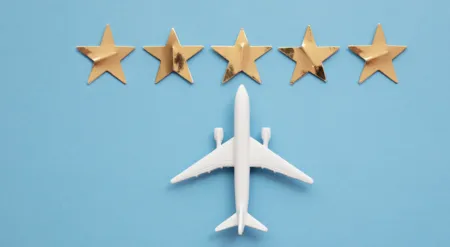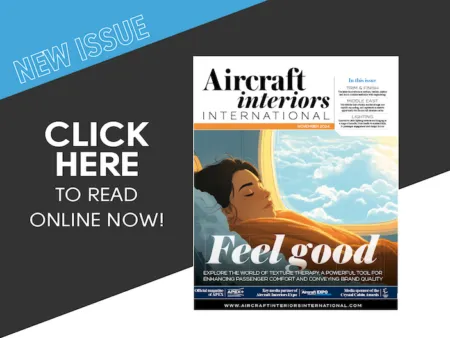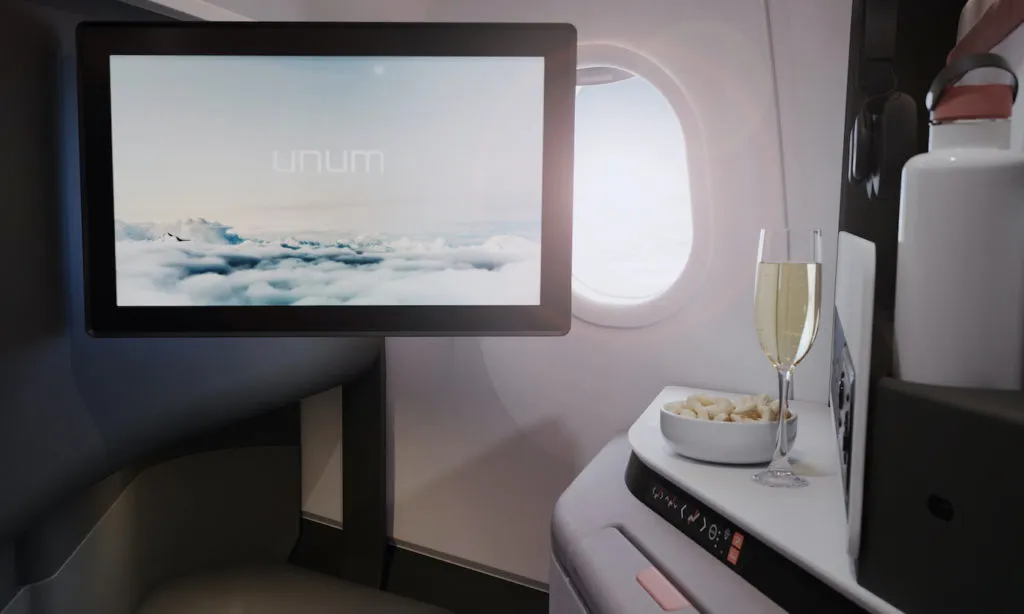The panel:
What items are considered a real luxury?
James Marlow, Zodiac Aviation Support: “Three items stand out in every international passenger survey: brand-name bags, recognized brand cosmetics and quality pens. They all share a ‘second life’, being used in the passengers’ daily routine, though the cosmetics are mostly used on board. Bags find their way into women’s purses or carry-ons to hold make-up, and men’s gym bags for shaving or bathing kits, or to hold electronic items and cables. Pens have been mostly replaced by technology, but are still needed to complete immigration forms at arrival.”
Shai Levy, Seventy Eight Percent: “None of the items are luxurious per se, it is the attention to detail and thought that makes the difference. A good quality, well-designed and thoughtfully curated kit will provide a special experience.”
Paulina Chalita White, Global Inflight Products: “Some items are considered a real luxury, but more than specific items, luxury is more often perceived by the quality of the items. You can include the same item in economy or first class – socks, for example. However, in this example, the perception of quality depends on the material, thickness, length and even color. Nevertheless the most upscale first class kits offer some extra items to pamper passengers, such as cologne, shaving cream, aftershave, shoe bag, deodorant, make-up remover, vanity kit, mirror, nail file, lint brush, etc.”
Mark Russell, Linstol: “From our experience it is as much about the bag as the contents. Leaving the passenger with a well-made bag or satchel is a way for an airline experience to remain with the customer long after the individual products have been used. In addition to the bag, the products that receive the most praise are luxury lotions and cosmetics that are designed to take the passenger’s mind off the fact they are on a long-haul flight.”
Thomas G Mockler, InflightDirect: “High-quality cosmetic items and products add to a luxurious image and presentation. These designer brands present themselves to passengers that may or may not have been exposed to them in the past.”
Pinar Meitzer, Spiriant: “Luxury items are defined by the brand chosen for the products. High-value brands for all items, from basics to cosmetics, improve the well-being of passengers. Passengers also feel indulged with high-quality materials. Slippers, pajamas or perfume would be items to be found in a luxury amenity kit range.”
Roland Grohmann, Formia: “Amenity kits are concepts in constant evolution. Obviously cosmetic brands are a kit’s contents key differentiator, and hence the most scrutinized by passengers. So the challenge remains to be accessible to the budget of a complimentary kit whilst enhancing its perceived value. Nowadays, the trend shows preference for less cosmetic items but in larger sizes, which helps relate to the retail product. Whilst some items have come to stay (lotion, lip balm, mist/facial spray) others such as EDTs are generally disappearing due to the tendency of passengers to prefer using their own fragrance.”
Below: American Airlines’ limited edition retro kit honors the airline brands from its past
Do passengers expect an amenity kit, even in economy?
James Marlow: “Absolutely! Economy class passengers are the ones that need them most! Even LCCs have accepted that passengers have an expectation for such small comforts as eye shades, earplugs and – at least – a mouth wash set. This is especially true of Middle Eastern and Asian airlines, where their passengers’ expectations of service are demanding.”
Shai Levy: “They certainly expect them in first and business class; not receiving one would be considered a let-down. In economy, while not expected, being given a kit would be a pleasant surprise.”
Paulina Chalita White: “Depending on the airline, the flight length and destination, passengers still anticipate the excitement of an amenity kit. It’s always important to keep it new and fresh, particularly for frequent travelers. Business and first class passengers definitely expect kits, especially on long hauls, whether for pleasure or business. Economy passengers may not always expect them, but amenity kits are certainly a fantastic way to make them feel special, especially during longer flights.”
Mark Russell: “The use of amenity kits varies drastically across airlines, but I would say most passengers on long-haul flights expect some type of amenity, regardless of cabin class.”
Thomas G Mockler: “Depending on the duration of the flight, passengers that sit in the front of the aircraft do expect some form of a useful kit. Many of these passengers prefer to have a product that can be used after the flight. The proliferation of electronic devices has made the amenity bag an interesting opportunity to also be used as a useful holder for such devices (an iPad cover, for example).
Pinar Meitzer: “It depends on the market. Passengers on flights within Europe mostly do not expect a kit, whereas those on long-haul flights might. However, it is always advisable to give passengers travel choices and give them the option to purchase amenity kits and other comfort items, whether through in-flight shopping or when purchasing the ticket.”
Nele Wallays: “First and business class passengers will expect an amenity kit, even on daytime flights. In economy class, an amenity kit will be very well received but is not expected, with the exception of long-haul flights of eight hours or longer.”
Below: Formia designed this kit for Brussels Airlines
How important is investment in amenity kits?
Yilma Kassaye, Zodiac Aviation Support: “Airlines are spending billions of dollars in replacing their fleets with state-of-the-art aircraft. However, airline customer experiences are affected by simpler investments, such as legroom, updated and varied IFE content and – especially – comfort items such as amenity kits. This is especially true for long-haul services, where customers appreciate the opportunity to refresh, refresh their breath and apply lip balm at the end of a long, dry flight. Most customers will also carry their kits off the plane with them – one of the very few opportunities that airlines have to create a lasting impact. This is why we advocate considering these expenses part of an airline’s marketing budget rather than as simple operating costs.”
Shai Levy: “It is very important for an airline to invest in making its customers feel special, and to enhance their travel experience. Amenity kits provide a great platform for that.”
Paulina Chalita White: “An airline’s investment in amenity kits is vital, particularly on flights where key amenities are expected. They are part of the onboard experience during longer flights, when passengers can relax, dream and enjoy the airline’s service. It is critical to present a ‘gift’, something remarkable that exceeds passengers’ expectations, eases their trip and differentiates the airline from the competition.”
Mark Russell: “When airlines make decisions about the level of investment in amenity kits, it typically boils down to the overall onboard experience the passenger garners, both during and after the flight. Often this opportunity is paired with furthering the airline’s brand and rewarding premium-class passengers with more luxurious amenities.”
Thomas G Mockler: “We believe it is an investment for an airline to present quality kits and contents that show they genuinely appreciate their passengers’ business and care for their comfort during their flight. It should be presented as a gift to show appreciation.”
Pinar Meitzer: “An investment in amenity kits benefits the airline by being a unique branding opportunity. The inflight experience is not only made more comfortable, but the passenger also carries the brand home in the form of the amenity kit. It is therefore crucial that an airline’s brand identity is reflected in the kit, while it also helps create a memorable flight experience.”
Nele Wallays: “For a passenger, cabin interiors often look very alike, so how can they define value? The amenity kit is one of the key elements on board for building brand value and for connecting with the passenger in a very personal and direct way. The amenity kit is a bit of luxury and fashion onboard that excites and wows the passenger.
Roland Grohmann: “The amenity kit has become a key indicator of an airline’s commitment to enhance comfort on board. The brand of the kit, the quality and the items included influence the perceived value of the kit. This is directly related to the passengers’ perception of the airline’s level of customer care, pampering and indulgence. Airlines are realizing the communication power that lies in amenity kits. Amongst all the complimentary items that make up the service on board (food, blankets, pillows, etc), amenity kits are the only one that passengers are meant to take with them after the flight. So the opportunity rises of servicing passengers’ comfort not only on board, but also after the flight.
Below: Hawaiian Airlines passengers can enjoy this kit from Global Inflight Products
Is a designer name important?
Yilma Kassaye: “Designers and airlines understand that brand recognition is a powerful tool, so both airlines and designers actively seek marketing alliances for this purpose. We actively seek to foster marketing alliances.”
Shai Levy: “Good design, product and story are more important than a brand or a logo. Putting a designer name on a generic pouch or item is a mistake. Amenity kits give airlines an opportunity to introduce their passengers to an array of great brands and products. Designer-named pouches will create an impact only if their designs are original and actually reflect the designers’ DNA – even more so when there is an alignment between the airline and the designer brand’s values. In such cases, the brands an airline chooses to partner with add an interesting angle to its own branding.”
Paulina Chalita White: “The most important goal is to deliver a quality product that enhances the perception and inflight experience of the airline brand. You want the passenger to feel the difference, to feel pampered, as if someone really selected these products for you. A designer name can improve perception, but it’s not a necessity. It’s more important to focus on quality and to introduce something new and unique to this captive audience, especially to the frequent flyer who has seen it all. Today there are many high-end brand-name amenities using low-end cosmetics. In these cases the airline is only paying for the name.”
Mark Russell: “Airlines have the option of supplying a well-known brand name or using their own branding when it comes to amenity kit contents. Each approach has its own advantages; however, leveraging the reputation of a designer’s products is a way for airlines to align their brand with a perception of luxury. That said, an airline should never discount the value and strengths of its own brand.”
Thomas G Mockler: “A designer name on any product increases perceived quality. So with quality products and a designer brand it can increase overall value. However, it’s not always necessary if the kit and container are well made using quality materials.”
Pinar Meitzer: “Airlines with a strong brand and brand identity prefer to have their own branded products, while other airlines choose to cooperate with famous brands to highlight their products and add value to them and their brand.”
Nele Wallays: “All cosmetic items (including luxury shaving sets) with an international brand name are perceived as a real gift. Well-known brands with high-end market positioning are key. If an airline’s budget allows, the brand name will help to differentiate them from the competition and to strengthen the airline’s brand personality. Airlines are stepping away from offering separate brands, each with its owns terms, image and market positioning. The choice of brand for amenity kits and relevant comfort products and services in all classes is becoming more of a design statement.”
Below: Mini Rimowa cases are proving popular with several airlines
What are the most important items to include in a kit?
Nariema Hazratalie, Zodiac Aviation Support: “The essentials should offer a balance between comfort and hygiene. We suggest our customers include earplugs, eye shades and a scented refreshing towelette for short-haul flights. For long-haul flights we suggest earplugs, eye shades, a dental hygiene kit, tube socks and lip balm.
Shai Levy: “An eye mask and earplugs are crucial for people like me who try to get some rest on board. A toothbrush and paste make the journey pleasanter for myself and the people I travel with. These are my must-haves.”
Paulina Chalita White: “The must-have items are earplugs, eye mask and socks; the addition of a toothbrush, toothpaste and cotton buds [Q-tips] is a plus. A refreshing towelette, pen, tissues, mints… these are some of the extra items that passengers also appreciate.”
Mark Russell: “In my opinion, an eye mask, earplugs,
a pen, mints, a toothbrush and toothpaste are the most important items. Airport security restrictions for carry-ons and accessibility to those items during flight are important to keep in mind when deciding what to include in any amenity kit.”
Thomas G Mockler: “The more important items in these kits is a balance of a functional container combined with useful, quality items that can be used inflight to increase comfort. InflightDirect believes, and has always believed, that amenity kits need to have a use onboard as well as after the flight. This can prove to be a useful tool for both airline marketing and passenger appreciation.”
Pinar Meitzer: “The basics items to include are an eye mask, socks, earplugs, toothbrush and paste. On top of these, sleeping items and personal care products are appreciated, such as lip balm or hand cream. Cosmetic products that can also be used after the flight are valued. Amenity kits should, however, be designed personally, addressing the individual needs of each airline and its passengers.”
Nele Wallays: “Dental set, earplugs, eye mask. It is also absolutely essential to have specific kits for males and females.”
Below: Silver Squiggle creates kits for kids, such as this range for UK regional carrier, BMI
Kids’ kits
Entertainment kits are becoming increasingly popular – after all, a happy child can mean a happy cabin! Jane Goring is director of Silver Squiggle, a supplier of children’s ‘edutainment’ kits, which include exciting inflight packs, fun at mealtimes, turn-down surprises, out and about activities and, most importantly, happy memories.
Goring explains, “A child’s kit is a relatively low-cost way for an airline to demonstrate to all passengers that it recognizes it has a duty of care to provide some form of entertainment – especially for two- to seven-year-olds, as older children can often entertain themselves with books, gadgets and IFE. Of course some parents fly prepared, but if a child is given something it enables airlines to engage with customers by improving the brand experience.”
So what items should an airline include in a children’s kit? “It is vital to give a child something to do. Airlines often make the mistake of spending all their budget on a bag or rucksack – great for brand visibility, but pity the poor parent who ends up with even more bags to carry off the aircraft, and pity the poor child that gets a bag with nothing to ‘do’ inside.
“What a child wants is something to play with (quietly of course), such as coloring books, puzzles, games and a small keepsake toy or collectable – ideally something unique and special, and definitely educational. No parent wants cheap plastic rubbish, so if they feel their child has been given something well thought out, everyone is happy.”
While mummy and daddy might like Armani-branded amenity kits, is it worth investing in a branded kids’ kit – SpongeBob perhaps? “The problem with known names is twofold. First, a licensing fee can bite a big chunk out of a small budget, leaving little for the kit itself. Second, they do go out of fashion and the last thing an airline wants is a warehouse full of kits that feature yesterday’s hot character,” explains Goring.




